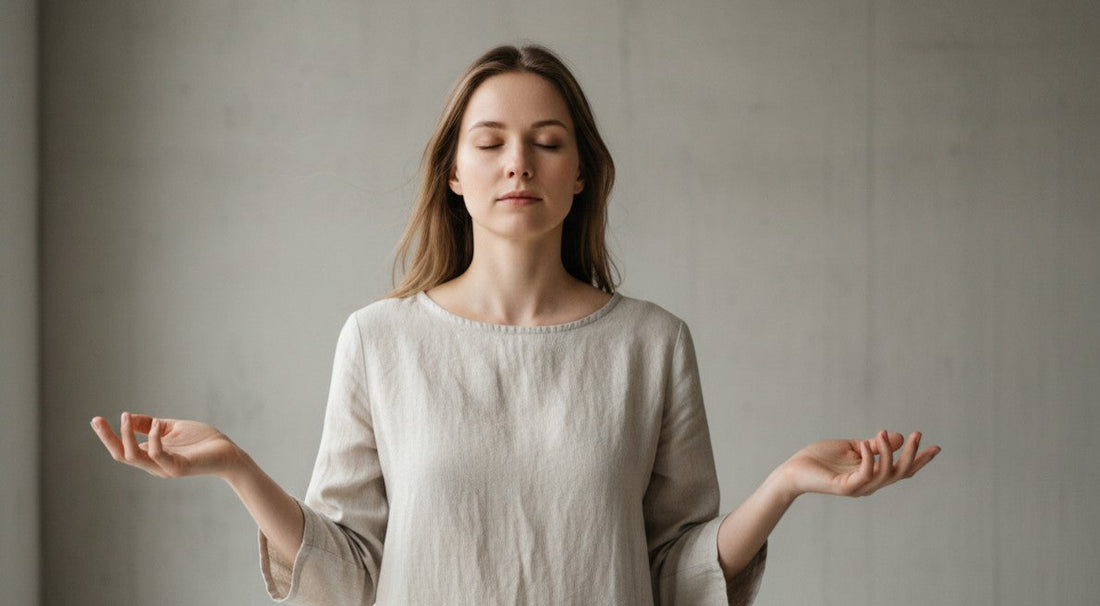The Quiet Power of the Senses
There are days when the mind feels like a crowded room. Thoughts rush in, the body tenses, and even small sounds can feel sharp. In these moments, peace can seem far away. Yet the way back to calm is often much closer than we imagine. It begins with the senses, the body’s most direct path to the present moment.
Modern life trains us to live in our heads. We plan, predict, and replay. But the body lives only in now. When we reawaken the senses, when we smell, touch, listen, and truly see, we give the nervous system a signal that we are safe. Anxiety softens, and the mind begins to settle into stillness.
“The way back to calm begins with what is closest - your own senses.”
Why the Senses Help Calm the Mind
Anxiety pulls attention into a future that does not exist yet. The senses pull it back to what is real. The body has thousands of sensory receptors feeding the brain information about what is happening right here. When we consciously engage them, we create a stream of data that can override worry and ground us in presence.
Research in neuroscience supports this. Sensory grounding, paying close attention to what you see, hear, touch, taste, and smell, interrupts patterns of rumination by activating brain regions responsible for orientation and attention. The body reminds the mind: you are here.

Each Sense as a Pathway to Calm
You can use the senses one by one, or together, as a full grounding ritual. The practice does not require any special space or equipment. Only presence and breath.
Sight
Notice five things you can see. Shapes, colors, light, texture. Let your eyes move slowly, taking in each object as if you were seeing it for the first time. Vision becomes an anchor rather than a flood of information.
Touch
Place your hand over your chest, or feel the weight of your feet on the ground. Notice temperature, texture, and contact. Touch grounds us in physical reality and calms the body almost immediately.
Sound
Close your eyes and listen for three distinct sounds. The hum of traffic, birdsong, or your own breath. Allow each sound to appear and fade without judgment. Listening with full attention opens awareness beyond thought.
Smell
Inhale gently. What do you notice? The scent of the room, your skin, perhaps nature or fresh air. Smell connects directly to the emotional centers of the brain, often bringing an instant sense of safety and calm.
Taste
Take a sip of water or tea. Notice its temperature and movement. This simple act of tasting is a gentle reminder to slow down and savor presence.
“Pause for a breath. Let your attention soften before you continue.”
Everyday Rituals of Sensory Grounding
Using your senses to calm anxiety can blend seamlessly into your day:
Morning - breathe in light and notice the world awakening around you.
Midday - feel the air on your skin or step outside for a moment of stillness.
Evening - listen for quiet before rest and let the day dissolve.
“Repetition transforms the ordinary into ritual. The familiar becomes sacred.”
The Science of Sensory Regulation
Modern research shows that sensory grounding engages both conscious attention and automatic bodily response. Together, they balance the stress response system.
Studies have found that scent and touch can directly influence emotional centers in the brain, helping shift the body from tension to calm. Other studies show measurable drops in cortisol and heart rate when people practice sensory mindfulness regularly.
Common Pitfalls and Gentle Guidance
It is natural for the mind to wander or for senses to feel dull at first. Begin small. One sense, one minute. Gradually, your awareness becomes clearer and more responsive.
If you feel overstimulated, start softly for example with a cool touch, quiet sound, or slow breath. Consistency matters more than perfection. Over time, your body learns the pathway to calm.
Ritual and the Return to Meaning
When you repeat a sensory act with intention, like lighting light, noticing scent, or listening to a familiar sound, it becomes a ritual. Rituals build trust in the nervous system. They remind the body that peace can be cultivated, not chased.
Each repetition strengthens the connection between sensory cues and emotional calm. Over time, even remembering the ritual can bring ease.
A Gentle Connection to Soul Space
At Soul Space, our work is to create companions for moments of return. Rituals that help you pause, breathe, and feel present. Our intention is to support your practice of stillness with beauty, care, and sensory awareness.
Closing Reflection
Your senses are not distractions from mindfulness. They are its gateway. Each breath, each sound, each texture under your hand is an opening back into presence. When you return through your senses, you train yourself to meet life with steadiness, one grounded moment at a time.
“Your senses are always waiting to bring you home.”
Frequently Asked Questions
Can sensory mindfulness replace therapy or medication
No. Sensory mindfulness is a supportive tool, not a replacement for professional care. It can complement therapy or medication by helping regulate everyday stress responses.
How often should I practice sensory grounding
Daily practice builds familiarity. Even a few minutes each day can create noticeable shifts in calm and clarity.
What if I do not notice any effect
Be patient. The benefits grow through repetition. Begin with one sense that feels natural and expand over time. Subtle change is still progress.
Can I use this practice in busy or noisy environments
Yes. Sensory mindfulness adapts to any setting. Even in busy spaces, focusing on one sense such as feeling your feet on the ground or noticing one sound, can bring you back to presence.

